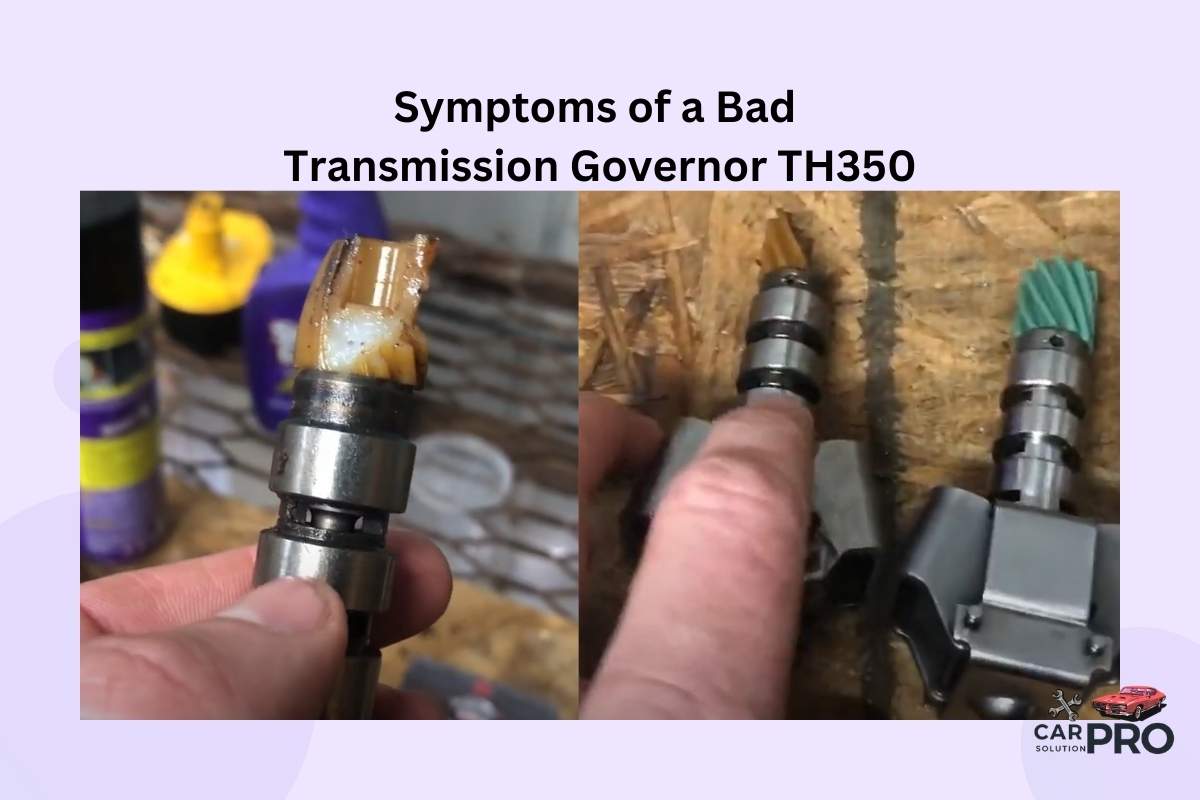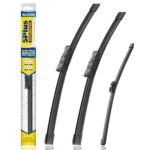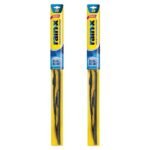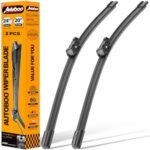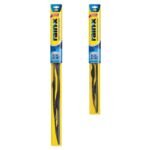The TH350 transmission governor plays a key role in automatic shifting. When it goes bad, it can cause major problems with your vehicle’s performance. Common symptoms of a faulty TH350 governor include delayed or erratic shifting, staying in first gear too long, and sudden loss of upshifts.
These issues can make driving difficult and potentially unsafe. A bad transmission governor may cause the car to jerk or hesitate when shifting gears. In some cases, the transmission might get stuck in a single gear or fail to shift properly.
Drivers may notice their engine revving higher than usual before shifting occurs. This can lead to decreased fuel efficiency and increased wear on engine components. If these symptoms appear, it’s important to have the transmission inspected by a qualified mechanic to prevent further damage.
Key Takeaways
- A failing TH350 governor causes erratic shifting and gear engagement problems
- Symptoms include delayed shifts, high engine revving, and getting stuck in one gear
- Prompt inspection and repair can prevent more serious transmission damage
Fundamentals of the TH350 Transmission Governor
The TH350 transmission governor plays a key role in controlling gear shifts. It uses centrifugal force and hydraulic pressure to determine when the transmission should change gears.
Role and Function
The governor in a TH350 transmission controls when the transmission shifts gears. It does this by sensing vehicle speed and sending pressure signals to the valve body. As the car goes faster, the governor increases hydraulic pressure. This tells the transmission when to shift up.
At low speeds, the governor keeps pressure low. This prevents unwanted upshifts. The governor works with the throttle valve to balance speed and engine load. This helps the transmission shift at the right times for smooth driving.
Delayed or erratic shifting can be a sign of governor problems. A faulty governor may cause the transmission to stay in lower gears too long or shift unpredictably.
Governor Components
The TH350 transmission governor has several key parts:
- Governor body
- Flyweights
- Springs
- Valve
- Drive gear
The governor body houses the other components. Inside, flyweights spin as the car moves. Centrifugal force pushes the weights outward at higher speeds. This movement controls the valve position.
Springs balance the flyweights. They help the weights return to their starting position when the car slows down. The valve regulates hydraulic pressure based on flyweight position.
A drive gear connects the governor to the transmission output shaft. This gear can wear over time, affecting governor operation. A worn gear may look like an “apple core” and cause shifting issues.
Recognizing Symptoms of a Failing TH350 Governor
The TH350 transmission governor plays a key role in controlling gear shifts. When it starts to fail, several issues can arise with the transmission’s performance.
Erratic Shifting Patterns
A failing TH350 governor often causes unpredictable shifting behavior. The transmission may shift gears at unexpected times, either too early or too late.
Drivers might notice the car shifting up or down for no apparent reason. This can happen even when maintaining a steady speed on a flat road.
In some cases, the transmission might skip gears entirely. For example, it could jump from first gear directly to third, bypassing second gear completely.
These erratic shifts can make driving uncomfortable and potentially dangerous. They may also put extra stress on the transmission, leading to further damage if not addressed promptly.
Delayed Gear Engagement
Another common sign of a failing TH350 governor is delayed gear engagement. When shifting from park to drive or reverse, there might be a noticeable pause before the car moves.
This delay can last several seconds and may be accompanied by a clunking sound when the gear finally engages.
During acceleration, the transmission might hesitate before shifting to a higher gear. This can result in a loss of power or a sudden surge when the gear finally engages.
Delayed engagement often becomes more pronounced as the governor’s condition worsens. It can be especially noticeable when the engine is cold or during quick acceleration.
Inability to Shift
In severe cases, a bad TH350 governor can prevent the transmission from shifting altogether. The car might get stuck in a single gear, usually first or second.
This problem is often most noticeable when trying to accelerate. The engine RPMs will increase, but the car won’t shift to a higher gear.
Sometimes, the transmission might fail to upshift to third gear. This limits the car’s top speed and can cause the engine to rev excessively at highway speeds.
In other instances, the transmission might not downshift properly when slowing down. This can make the car feel sluggish when accelerating from a stop.
Diagnostics: Identifying Bad Governor Issues
To pinpoint problems with a TH350 transmission governor, mechanics use two main approaches. These methods help reveal issues that may not be obvious from symptoms alone.
Pressure Testing
Pressure testing is a key way to check if the governor is working right. Mechanics hook up a pressure gauge to the transmission. They then drive the car and watch the gauge readings.
The pressure should go up as the car speeds up. If it doesn’t, that’s a sign of governor trouble. Normal pressure is about 60-70 psi at highway speeds.
A faulty governor might show low pressure or irregular changes. Mechanics look for steady pressure increases that match speed changes. Sudden drops or jumps in pressure can point to governor problems.
Visual Inspection
Looking at the governor can show physical damage. Mechanics take out the governor to check it closely.
They check the governor weights for free movement. Stuck weights can cause shifting problems. The gear on the governor is another important part to inspect. A worn gear might look like an apple core.
Mechanics also look for dirt or metal bits in the governor. These can block oil flow and mess up shifting. Clean parts and smooth movement are signs of a healthy governor.
Servicing the TH350 Governor
Proper maintenance of the TH350 governor is key for smooth transmission operation. Regular servicing can prevent issues and extend the life of this critical component.
Governor Removal
To remove the TH350 governor, start by draining the transmission fluid. Next, remove the pan and filter. Locate the governor at the rear of the transmission. Unscrew the retaining bolt and carefully slide the governor out.
Take care not to damage the gear on the governor shaft. This gear can wear over time and may look worn like an apple core if in poor condition. Inspect it closely for any signs of damage.
Governor Cleaning
Clean the governor thoroughly using a degreaser and soft brush. Pay special attention to the weights and springs. These parts should move freely when cleaned.
Check for any debris or metal shavings stuck in the mechanism. Such contaminants can cause erratic shifting. Rinse the governor with clean solvent and dry it completely with compressed air.
Inspect all parts for wear or damage. The weights should pivot smoothly, and springs should have good tension. Replace any worn components to ensure proper function.
Governor Replacement
If the governor is beyond repair, replace it with a new or rebuilt unit. Ensure the replacement matches your TH350 model exactly. Lubricate the new governor before installation.
Carefully slide the governor back into place, making sure the gear engages correctly. Tighten the retaining bolt to the proper torque specification. This is typically around 25-30 ft-lbs, but check your manual to be sure.
Reinstall the filter and pan with a new gasket. Refill the transmission with fresh fluid. Start the engine and check for leaks. Test drive the vehicle to ensure smooth shifting at various speeds.
Preventive Measures and Best Practices
Taking care of your TH350 transmission governor can help avoid problems. Regular upkeep and timely replacements are key to keeping it in good shape.
Regular Maintenance
Check the transmission fluid often. Low or dirty fluid can harm the governor. Top up the fluid if it’s low. Change it as your car manual says.
Clean the transmission pan when you change the fluid. This gets rid of dirt that could damage the governor. Look for metal bits in the old fluid. These may mean wear in the governor or other parts.
Inspect the governor gear when you can. A worn gear looks like an apple core. Replace it if it’s damaged.
Listen for odd noises when driving. Strange sounds may mean governor issues. Get them checked out fast.
Replacement Intervals
Replace the governor every 100,000 miles as a rule. This helps stop problems before they start. Some cars may need it sooner. Check your manual or ask a mechanic.
Look for signs of wear during fluid changes. If you see issues, replace the governor right away. Don’t wait for the 100,000-mile mark.
Watch for shifting problems. Delays or jerky shifts may mean it’s time for a new governor. Don’t ignore these signs.
Get your transmission checked yearly. A pro can spot governor wear early. This can save you from bigger issues later on.
Frequently Asked Questions
The TH350 transmission governor plays a crucial role in gear shifting. Problems with this component can lead to various issues that affect the transmission’s performance and driving experience.
What are common signs of a failing TH350 transmission governor?
Delayed or erratic shifting is a primary sign of a faulty TH350 transmission governor. Drivers may notice the transmission struggling to shift gears smoothly or at the appropriate times.
The vehicle may also experience unexpected gear changes or remain stuck in a particular gear.
How can you tell if the governor in a TH350 is stuck?
A stuck TH350 governor often results in the transmission failing to upshift. The vehicle may remain in first gear, unable to shift to higher gears even as speed increases.
Inspecting the governor gear can reveal visible wear, resembling an “apple core” shape if severely damaged.
What should I expect if the TH350 governor is not functioning properly?
A malfunctioning TH350 governor can cause the transmission to lose its ability to upshift. This may result in the vehicle being stuck in first gear or failing to shift to third gear.
The transmission may also exhibit unpredictable behavior, shifting at inappropriate times or failing to shift when needed.
Can a malfunctioning TH350 governor cause gear shifting issues?
Yes, a malfunctioning TH350 governor directly impacts gear shifting. It can cause delayed shifts, erratic shifting patterns, or prevent the transmission from shifting altogether.
These issues can lead to poor vehicle performance and potential damage to other transmission components if left unaddressed.
What role does the transmission governor play in the operation of a TH350?
The TH350 transmission governor controls the timing of gear shifts based on vehicle speed. It uses centrifugal force to adjust oil pressure, signaling when the transmission should shift gears.
A properly functioning governor ensures smooth and timely gear changes for optimal vehicle performance.
What are the troubleshooting steps for a TH350 transmission with governor problems?
Initial troubleshooting involves checking transmission fluid levels and quality. Low or contaminated fluid can cause governor-related symptoms.
Dropping the transmission pan to inspect for debris or damage can provide valuable information. A visual inspection of the governor and its components may reveal obvious issues.
If problems persist, professional diagnosis and potential governor replacement may be necessary.
When you purchase a product through Amazon links on carsolutionpro.com, we may earn a small commission at no extra cost to you. This helps support the site and keep our content free. As an Amazon Associate, we earn from qualifying purchases made through our links.
